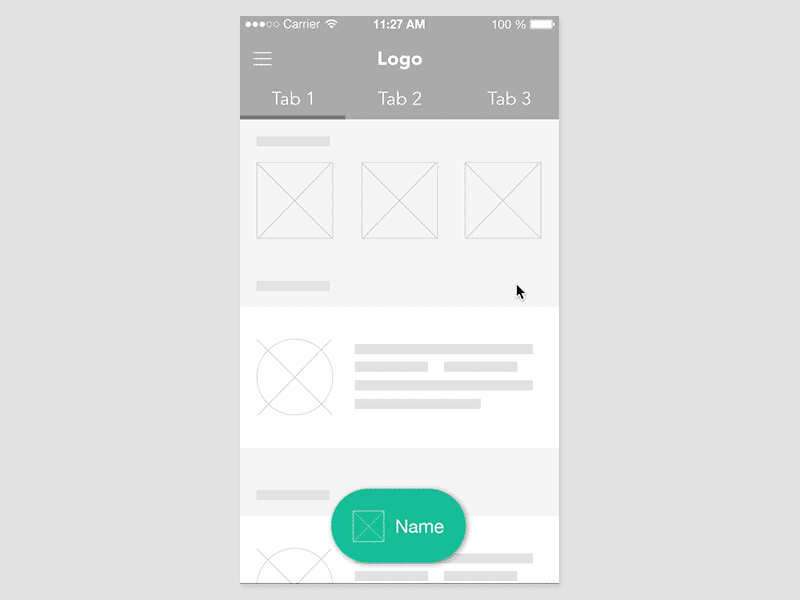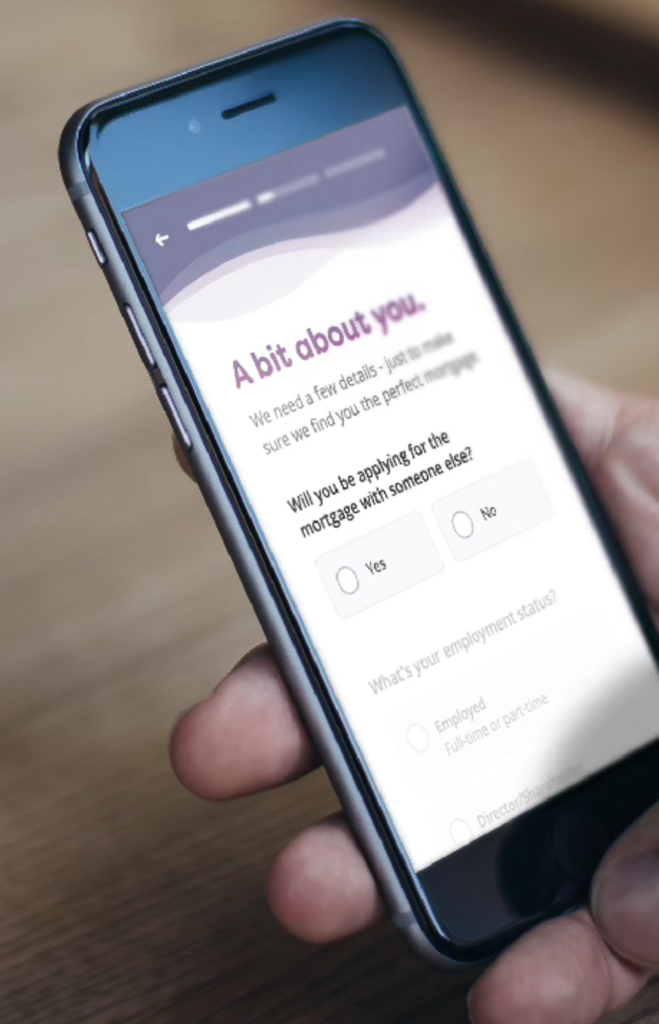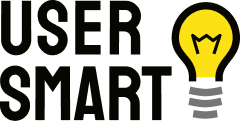Vision & Clarity
Just as a navigational North Star leads travelers toward their destination, a well-defined UX vision helps teams stay focused and serves as the foundation to build the right product.
Find your North Star
The “North Star” in UX vision and customer experience strategy serves as a clear direction and focus. It represents the end goal or aspiration that all efforts align with. In practice, it helps with measuring success, avoid distractions, and foster alignment between cross-functional teams.
Where are we going?
When building a product, the first step is to define the North Star. This is a simple and clear end goal, a summary of how success looks like. If we get there, the project was successful.
When mobile payment methods were created, their North Star was “people can pay without their wallets”. An end goal that was easy to understand and be excited about. This was a big leap, however, and wasn’t achievable in one step, but it was a clear direction where they were going.
How do we get there?
To get closer to the North Star, we need smaller, achievable steps. Staying with the mobile payment example – to allow people to pay without their wallets – required a lot of smaller, meaningful features to enable that, like storing your payment cards in a digital wallet, securely protecting this, and a payment process between mobile and card machines. These were the milestones towards their North Star.
Did we get there?
Milestones are achievable steps, but more importantly, measurable steps. Key performance indicators (KPIs) linked to these milestones are used to track performance and progress towards them. Whether it’s customer retention, Net Promoter Score (NPS), or task completion rates, consistent measurement of these metrics will show how well you’re progressing towards your North Star. Is your strategy working or does it need adjustment?
It’s a team effort
It’s crucial that everyone involved is on board. By ensuring all departments understand and work toward the same North Star, they can rapidly implement changes that reflect the unified vision, even in the short term.
Excellent usability
Let’s hit the first milestone! I firmly believe that excellent usability is the primary focus throughout the entire product development process. That helps the teams hit KPI’s in the short term, and keep your users coming back for more in the long run.
Learn & understand
Do we know exactly what the problem is? It is beneficial to conduct an audit of the current customer experience to understand where the gaps are in the customer journey. Capture requirements, existing data and assumptions.
Fill knowledge gaps through research. This can involve surveys, usability testing and further user research methods to identify pain points or areas for improvement.
AI tools offer features that can help streamline data collected through the audit and ensure focus on the right areas during research.
Prioritize quick wins
Next step is to prioritise areas that can be improved quickly with minimal effort but deliver noticeable business impact.
For example, fixing a frustrating UI element, streamlining a common task, or addressing recurring customer service issues.
Don’t forget about the bigger, more complex customer problems. These could help you better understand and clarify the milestones you’re working towards in your product strategy.
Explore and build prototypes
One day, AI tools might allow us to abandon conventional design practices. Until that, they can reduce time spent on design exploration, encourages rapid iteration, and accelerates product development, all while keeping the focus on user needs and business goals.
As design time reduces rapidly, there is more opportunity on conceptualizing, testing and ultimately building a better thing for the customer.
Validate & iterate
Prototype the most promising concepts. Use them to gather input from users, stakeholders. This is the time to fail fast and highlights areas for improvement.
Iterate based on feedback. Enhance functionality, aesthetics, address usability concerns.
By adopting this step, the prototype gains a greater likelihood of solving the problems more effectively.



Applying the steps above will bring you closer to your milestones and ultimately to your North Star.
Check out how this works in practice.
Continuous growth
You slowly transition from quick wins and first steps to scaling and embedding the vision into the organization’s DNA. This long-term, iterative approach ensures that the strategy not only drives early success but also propels the organization toward a customer-first product evolution.
Build a backlog
Not all battles can be fought immediately. It’s more crucial to accumulate a backlog and diligently track the tasks that require attention rather than attempting to resolve everything at once.
Refine based on data
Use the data and insights from your quick wins and initial steps to refine the approach. This might involve analyzing user feedback, behavioral analytics, or satisfaction metrics to identify further opportunities for improvement.
Stay focussed
Ruthlessly prioritize! Maintain your focus on the improvements that have significant value for the customer and align with your milestones and core objective. If something lives on the bottom of your list, it may not be as significant as previously thought.
Long-term projects
Some steps require more time and effort. Focusing on the milestones will move the organization closer to the vision, but be prepared to adjust them if required. Enhance the product’s usability and maintain its positive qualities while you walk towards the next milestone.
Build Systems, not features
When adding new features, it is important to consider how they fit into your existing experience, both from a visual and usability perspective. Stop thinking in features and focusing solely on short-term wins.
Just as a coherent story maintains a logical and easy-to-follow arc, a user journey should also be consistent, both visually and in terms of usability, and should provide a seamless experience for the user.
A design system provides a unified approach to design and development that ensures consistency, accelerates workflows, and enhances collaboration—all of which are essential for maintaining high-quality, scalable products.
UI consistency
A design system ensures uniformity in UI elements, typography, colors, and patterns across a product or platform, leading to a cohesive UX and a strong brand identity.
Streamlined design workflow
It streamlines the design and development process by providing reusable components, templates, and guidelines. Teams focus on solving unique problems and reducing repetitive tasks.
Scalability
Scales easily as projects grow, providing a consistent foundation for adding new features and pages. Teams can update or extend the system without disrupting the user experience.
Boosted collaboration
Promotes better collaboration by providing a shared language and guidelines, ensuring everyone is on the same page and reducing misunderstandings.
High design quality
Maintains high product quality with predefined standards and reusable components. They reduce errors, ensure accessibility compliance, and simplify adherence to design best practices.
Easy handovers & onboarding
New team members can quickly learn by referencing the design system, which acts as a reference guide and facilitates smoother knowledge transfer.
Reusable components
By reusing well-defined components, teams can maintain a unified user experience while avoiding redundant work.
Cost effectiveness
Organizations can significantly save long-term costs by reducing effort duplication, minimizing miscommunication, and improving efficiency.
Design system with the help of AI
Creating and maintaining a design system is an ideal task for AI, as it involves repetitive and precise tasks. AI tools can integrate existing design systems to maintain consistency when introducing new features. They can also generate systems based on existing components in Figma, identify and fix inconsistencies.
Do you have a design system?
If you have one, that’s a great start! I will ensure that the solution aligns with your existing system or requires minimal modifications.
But there are more benefits beyond component reuse and documentation. It is crucial that the design system works for your business and serves product development instead of being a bottleneck.
I’ve worked with few and created some in the past few years.
If you don’t have one yet, don’t worry. Creating and maintaining one became much easier recently, thanks to automated systems and the help of AI.
It’s never late to consider having one and build it the right way.
Keep listening
Broaden customer feedback channels
As the scope of your efforts grows, it’s vital to diversify how you gather customer feedback. Consider expanding into more proactive channels like community engagement, user advisory boards, or in-app/web feedback systems to capture a broader spectrum of user perspectives.
Personalize and build relationship
At this stage, consider how you can make experiences more personalized and meaningful at scale. Building stronger relationships with customers through tailored experiences, communication, or offers can greatly enhance loyalty and satisfaction.
Your design system will always evolve. Use customer feedback and usability data to review and improve your rules.
Document
Documenting design changes helps maintain a well-organized, clear, and efficient process, while also supporting future development and improving collaboration.
Generating comprehensive documentation is essential long term.
- It ensures everyone involved in the project understands the rationale behind each change, avoiding confusion and aligning teams.
- Tracking design changes maintains consistency throughout the project. Documenting updates ensures all design parts reflect current decisions and guidelines.
- Consider version control, which records design evolution, tracks progress, compares iterations, and allows reverting to previous versions.
- Documenting the reasoning behind each change creates accountability and transparency in decision-making, especially in collaborative or regulated environments.
- Teams can analyze past decisions, learn from them, and improve future designs by using feedback and improvement. Documentation can also help identify successful strategies or pitfalls.
- In some industries, detailed records of design decisions are required for compliance or legal purposes.
AI can quickly generate these comprehensive reports that summarize design decisions, test results, and changes in user journeys. These reports can be tailored to different stakeholders, whether they’re designers, developers, or business leaders, saving time spent on custom reporting and ensuring everyone has the insights they need.
Revisit and evolve the North Star
As your product and customer experience evolve, so too might your North Star. Regularly reassess if the original vision still holds or if it needs refinement based on changes in customer needs, market trends, or business goals.
As you scale, new challenges and opportunities will arise. Be prepared to adapt your strategy, always keeping an eye on the North Star but remaining flexible in your approach to achieve it.
Transform your business
Finally, here are some principles to maintain growth by embedding UX into the organization’s DNA
Align cross-functional teams
Ensure alignment between product, design, engineering, marketing, and other teams around the North Star. This may involve structured workshops, regular syncs, or company-wide updates to align everyone and work toward the same customer experience goals.
Embed UX and CX into product development
Ensure UX is integrated into every product lifecycle stage, from ideation to post-launch evaluations. This deeper integration makes the North Star a consistent guiding principle throughout development.
Create a user-centric mindset
Encourage a culture where feedback, both internal and external, is always welcomed and acted upon. This can be achieved by regular user interviews, testing, and engagement with customer-facing teams.
Foster a culture of continuous improvement
Empower teams to experiment with new ideas that may not be part of the initial plan but have the potential to significantly enhance the customer experience. Create safe spaces for innovation, where failures are seen as learning opportunities rather than setbacks.
